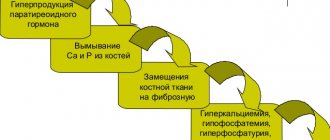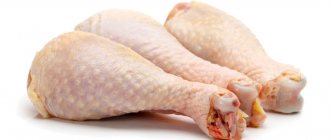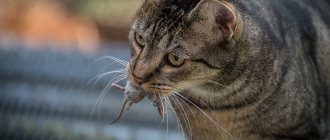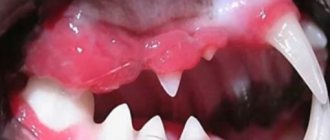Polycystic kidney disease in cats is a deadly pathology, accompanied by a gradual loss of functionality of the organ and systems associated with its functioning. It is not treatable, but with timely therapy its development can be slowed down. To do this, you need to contact a veterinarian at the first signs of illness, preventing the disease from progressing to an advanced stage.
What is polycystic kidney disease
The essence of the disease is conveyed by its name, consisting of 2 words: “poly” and “cystosis,” that is, numerous cysts. As a result of a genetic mutation, many vesicular cavities filled with fluid are formed in the kidney tissue.
Characteristics of the disease
Cysts grow gradually, so in the early stages there are practically no symptoms. Over time, neoplasms replace most of the healthy cells, disrupting the filtering function of the kidneys.
Accumulating toxins poison the body, and the contents of neoplasms attract pathogenic microflora. If diagnosis is too late, the animal dies from acute intoxication or related complications.
Susceptibility of cats to this pathology
The risk group includes representatives of the Persian breed and their immediate relatives. These include:
- British;
- Scots;
- exotics;
- Himalayans.
It is also worth noting the mixed breeds obtained as a result of mating with any of the above cats. The better the pedigree of their parents, the higher the risk of transmitting the disease.
Dangers and complications
Unlike liver cells (hepatocytes), kidney cells (nephrons) are not able to recover. Their destruction is irreversible, therefore, with an advanced form of the disease, the cat develops the following complications:
- malignant neoplasms;
- glomerulonephritis and pyelonephritis;
- chronic renal failure (CRF);
- sepsis.
Owners of high-risk pets are recommended to be examined by a veterinarian every six months. Thanks to regular diagnostics, pathological changes in tissues can be detected even without severe symptoms.
Division into types
Depending on the type of mutation, pathology is divided into 2 types: autosomal dominant and autosomal recessive. In the first case, the animal inherits the “spoiled” gene from only one parent, and in the second, from both.
Symptoms of polycystic disease
Cysts tend to grow quite slowly, so most affected cats will not show any signs of kidney disease until they reach middle age, usually 7-8 years. However, in some cats the disease appears much earlier, and there is currently no way to predict how quickly the disease will progress in any given case.
For a long time, polycystic disease may not cause any discomfort and it is very difficult to determine from external signs that the animal is sick. As you age, the cysts grow larger and larger. As the kidneys become more cystic, the normal kidney tissue becomes thinner and the organ stops working properly. Polycystic disease develops into kidney failure with all the characteristic signs.
The most common signs of kidney failure are:
- Frequent urination (polyuria).
- Increased water intake (polydipsia).
- Anorexia (not wanting to eat).
- Depression and lethargy.
- Weight loss.
- Dull fur.
Besides:
- Gastrointestinal upset (vomiting or diarrhea)
- Nervous system disorder (seizures)
- Anemia and resulting weakness
- High blood pressure
- There have been cases where cats have also developed cysts in the liver.
It is important to remember that the development of the disease does not depend in any way on the sex and age of the animal. Sometimes, detected cysts in the first year of life do not develop into kidney failure
But kittens in which both parents had mutated genes, as a rule, did not live to be 2 months old. Since polycystic disease is a hereditary disease, the breed of the animal plays a large role in the possibility of its development.
Main causes of polycystic disease
Polycystic kidney disease in cats is not transmitted to other animals by contact, since its only cause is poor heredity. It is caused by the acquisition of a defective PKD1 gene, which is responsible for protein synthesis.
The autosomal recessive type of pathology is the most dangerous. The combination of two “spoiled” genes at once leads to the death of kittens while still inside the mother’s womb.
With an autosomal dominant form, newborns look quite healthy, since cystic formations are just beginning to form. The first signs of illness are observed at 2-3 years, and the peak of the disease occurs at 7 years.
Symptoms of the disease
The process of replacing nephrons with cystic formations is very slow, so owners go to the veterinary clinic only when problems occur in the urinary system. At this point, the animal’s thirst increases and urination becomes more frequent.
Under the influence of toxins, the cat becomes lethargic and apathetic. His appetite disappears. There is weight loss, nausea and vomiting.
After the appearance of these symptoms, the patient's condition steadily worsens. For this reason, it is important not to delay the examination and strictly follow all doctor’s prescriptions.
Three stages of development with characteristic features
Symptoms and treatments for polycystic kidney disease in cats depend on its stage. The most favorable prognosis is typical for early. At this point, maintenance therapy allows you to extend the pet’s life for the maximum possible number of years.
Early
The animal’s well-being at this stage does not cause concern. There may be slight lethargy and a lag in weight gain in kittens.
Mild pain on palpation of the abdomen in the area of the diseased organ is the only sign that can be noticed independently. Other changes (deviations in basic urine test parameters and increased blood pressure) cannot be diagnosed at home. They can only be detected during a routine examination by a veterinarian.
Average
The concentration of toxins is increasing. Due to a violation of the filtration function, the body tries to get rid of the irritant by vomiting. Frequent nausea affects activity and appetite. A sick cat refuses to eat and drinks often, trying to remove toxic substances through urine. The abundance of fluid is reflected in the frequency of urination.
In addition to increasing pain in the kidneys, there is a decrease in visual acuity and a change in the size of the pupils. This occurs due to increased pressure affecting the condition of the retinal vessels.
Body temperature rises, weakening the body's defenses. This increases the likelihood of urinary tract infection. If nerve receptors are damaged, convulsions and seizures may occur, which can lead to the development of a stroke.
Late (neglected)
At the last stage, pronounced signs of chronic renal failure are observed. These include:
- cloudiness of urine and the appearance of blood impurities in it;
- loss of response to stimuli and increased frequency of seizures;
- increased vomiting;
- complete refusal to eat.
Tests of the patient's urine and blood show an increase in proteins and nitrogenous wastes. Acute anemia is observed, and the cysts themselves often develop into malignant ones. Infection with bacteria or other pathogens at this point is fraught with sepsis and death of the animal.
Symptoms and diagnostic methods
There are several stages of development of this disease. Among them:
- The appearance of primary symptoms. When the renal cyst begins to grow, lethargy occurs, the animal becomes inactive and apathetic. During this stage, the pet urinates and drinks water frequently.
- Progression. At this stage, the animal intensively consumes fluid and empties its bladder even more often. The cat becomes extremely passive and begins to rapidly lose weight. At this stage there is a risk of developing a bacterial infection. The formations grow and begin to put pressure on the kidneys, causing inflammation of the affected areas and an increase in overall body temperature.
- Complication. At this stage, there is a high risk of death due to acute intoxication associated with poor kidney function. The general condition of the pet deteriorates significantly, convulsions and vomiting occur. Bloody clots can be seen in cat urine. At this stage, the pet refuses to eat, but continues to drink liquid.
In addition, with polycystic kidney disease, the animal stops responding to external stimuli, tries to find a secluded place and experiences muscle weakness.
Diagnosis of the disease is performed using the following methods:
- Visual inspection and palpation. The veterinarian will carefully examine the pet's back and abdomen. With polycystic disease, compactions may be observed in these areas.
- Urine and blood serum tests. They allow you to assess the general condition of the cat, as well as the presence of intoxication and inflammation. With polycystic disease, urine becomes cloudy and often contains blood impurities.
- Ultrasound examination of the kidneys. This diagnostic technique is considered the most informative. Cysts in the kidneys are detected using a computer monitor. In this case, the doctor can accurately determine their size.
- Biopsy. This technique is used as an auxiliary diagnosis. The procedure is performed using a special needle, which makes a puncture in the area of the affected kidneys. After this, the contents of the formation are removed for subsequent microscopic examination.
How to diagnose
Palpation at an early stage rarely gives positive results, as the cat quickly gets used to the unpleasant sensations. Ultrasound gives the most detailed picture. With its help, you can see the existing tumor and assess the condition of the affected organ. By the age of 1 year, it acquires a bumpy outline, so it is recommended that pets at risk be examined for the first time at this time.
In addition to ultrasound, it is necessary to undergo blood and urine tests, as well as a biopsy to determine possible malignancy. Secondary urinary tract infections are detected by culture of kidney tissue samples. At an advanced stage, x-rays are used to make a diagnosis.
Some veterinary clinics can make an appointment for genetic testing. If you are not sure about the DNA of your pet’s parents, then thanks to this study, you can find out about the existing predisposition before the pathology worsens.
Treatment
No specific therapy has been developed for this pathology. Treatment of polycystic disease in cats is carried out according to symptoms, methods depend on the phase of development:
- in the early stages - damaged areas can be removed surgically;
- in case of advanced disease, the operation will not give the expected result due to multiple cystic formations.
After making a final diagnosis, the veterinarian prescribes medications for the pet to help fight intoxication in the body. Symptomatic therapy is also provided:
- prevention of the development of renal failure is carried out with medications containing phosphorus;
- During treatment, medications with vitamin D are administered;
- if your pet has constantly elevated blood pressure, then antihypertensive drugs are prescribed;
- in case of severe vomiting, it is recommended to take antiemetic medications;
- infectious processes are suppressed by antibacterial drugs;
- normalization of red blood cell levels, prevention of chronic renal failure and anemia requires the introduction of hormonal medications into therapy.
Polycystic disease is a dangerous pathology. Attempts to independently select medications and treat a sick pet can provoke a sharp deterioration in the condition, cause the development of complications and subsequent death.
Methods of therapy and maintenance of living standards
There is no specific therapy for the treatment of polycystic kidney disease in cats. The methods used are aimed at slowing down the rate of development of cysts and relieving associated symptoms. All medications are selected individually depending on the condition of the mustachioed patient and the stage of development of the disease.
Drug therapy
To reduce blood pressure, a mustachioed patient is prescribed myotropic drugs. Attacks of nausea are relieved with gastroprotectors that protect the mucous membrane. In addition to eliminating vomiting, they help prevent the formation of stomach ulcers.
Antibiotic therapy is carried out when a secondary infection is detected. The drugs are periodically alternated to prevent pathogenic microorganisms from becoming addicted.
The level of toxins is regulated using subcutaneous injections that stimulate the outflow of harmful substances along with urine.
For chronic renal failure that weakens the filtration function, it is recommended to take phosphate binders. They reduce the absorption of calcium and dietary phosphate from the gastrointestinal tract, preventing the following complications:
- skeletal damage;
- bone pain;
- progression of renal failure;
- development of cardiovascular diseases.
Deficiency is often accompanied by anemia, which is characterized by a low level of red blood cells in the blood. To maintain the required number of these cells, the synthetic hormone erythropoietin is used.
Purpose of the diet
When feeding dry food, it is recommended to switch to wet food for animals with chronic renal failure. Their composition is characterized by a reduced content of phosphorus and protein. You should also introduce the drug Calcitriol into your diet, which improves the synthesis of vitamin D.
When feeding naturally, fatty and high-calorie foods should be avoided. A sick pet's diet should have enough fluid. It can be obtained not only from ordinary water, but also from broths, vegetables or fermented milk products.
Necessary procedures
In addition to diet and medication, sick animals must undergo rehydration detoxification. The most effective procedures include:
- plasmapheresis, which involves purifying blood outside the body, including transfusion of a donor sample;
- hemosorption, which involves cleaning with sorbents inside the body.
Periodic detoxification can improve the general condition of a mustachioed patient. For the same purpose, pumping out pathological fluid from cysts using a puncture needle is prescribed.
For small tumors, the affected tissue is removed surgically. If at the time of treatment the cysts have already grown and united with each other, the operation is considered inappropriate. In such cases, new cavities quickly form in place of the removed cavities.
How long will a cat with polycystic kidney disease live: prognosis
The patient's life expectancy depends on the stage of development of the pathology. An unfavorable prognosis is typical for those whose cysts occupy more than half of the kidney tissue and all the symptoms of chronic renal failure are present. Pets suffering from the disease at an advanced stage live only 2 months.
If pathology is detected at the middle stage, the prognosis is slightly more favorable. The survival period ranges from 2 months to 2 years.
If the neoplasms are still very small and do not progress, then after their removal the animal can live to a ripe old age. To do this, it is necessary to follow recommendations for maintenance therapy and dietary revision.
Why do cats develop polycystic disease?
The main factor contributing to the occurrence of polycystic disease is genetic predisposition. No other reasons have been identified at this time. Scientists suggest that these may be diseases of the endocrine glands, in particular, the development of cysts is stimulated by vasopressin and parathyroid hormone, but both of these substances are physiological, and normal functioning of the body is impossible without them.
Why can a kitten get such a hereditary disease as polycystic disease from its parents? The fact is that the PKD-1 gene is responsible for the synthesis of a specific protein, and the result of its mutation is the development of the disease. If we talk figuratively, then this protein is a kind of building block, a structural element.
The renal tubules are built from these bricks - tubes in which the process of urine formation and purification of the blood from toxins and other waste products takes place.
The mutation leads to the formation of an incorrect protein, which disrupts the structure of the kidney tissue and the formation of a closed cavity instead of tubes.
Each cat carries two genes for protein synthesis. These may be two normal genes (nn) or one normal (n) and one defective (m). If a kitten receives one defective gene from one of the parents at conception, it will develop polycystic disease; two defective genes lead to death at birth. Fortunately, it is possible that healthy kittens can be born from two sick animals and inherit two normal genes.
INTERESTING TO KNOW: What is the danger of glaucoma in cats











